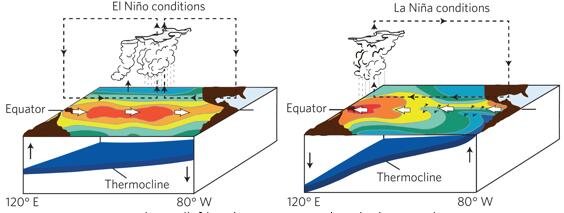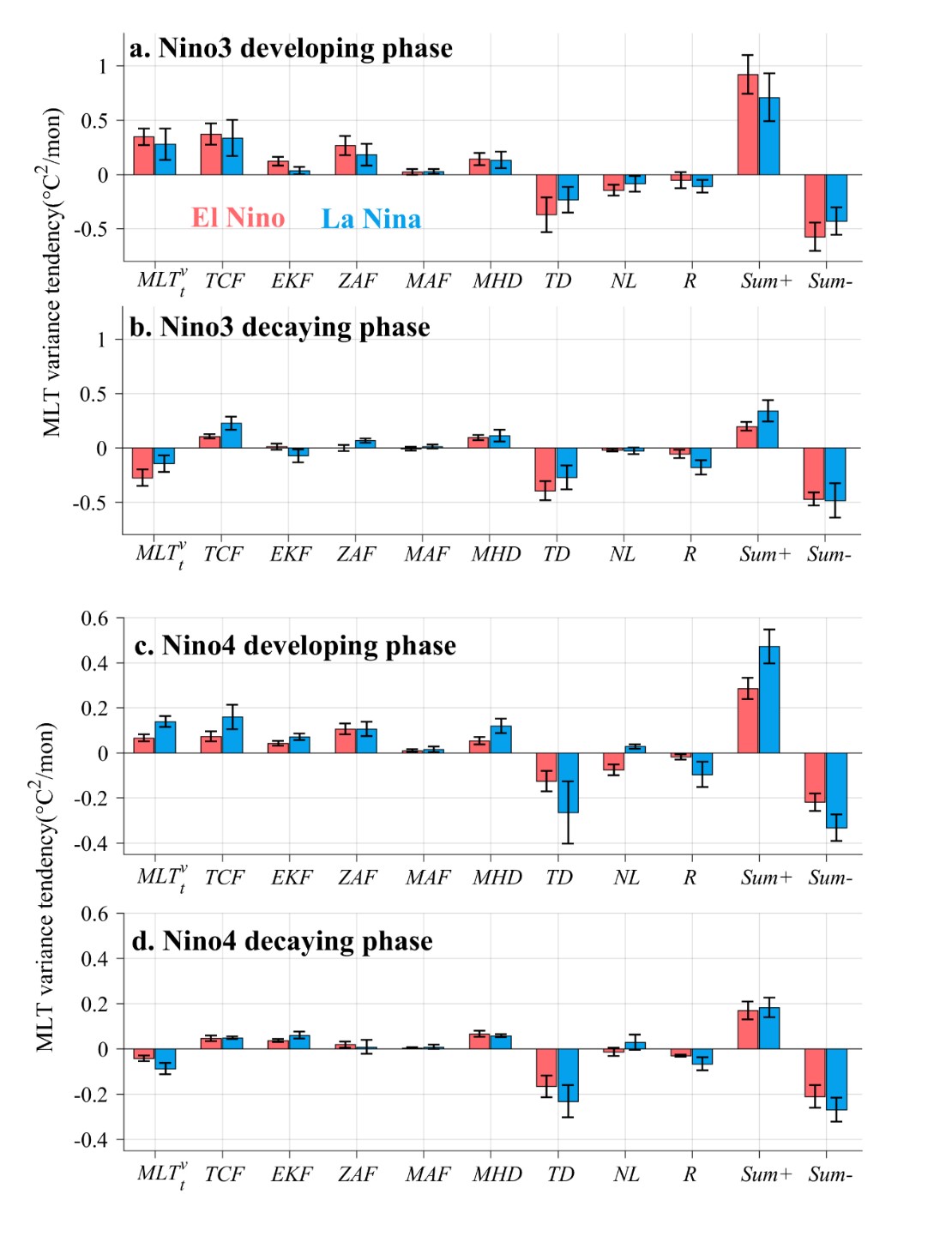The El Nino–Southern Oscillation (ENSO) is well known to have profound impacts on global climate. Many asymmetric features exist between its warm phase of ENSO (El Nino) and cold phase (La Nina), but their causes are still not fully understood. To uncovering the causes of low-frequency variability and asymmetry of ENSO cycle, the scientists from Institute of Oceanology build a complete set of temperature variance equation, which is able to determine whether a single oceanic dynamic process is a positive or negative feedback and make it possible accessing its contribution quantificationally. They applied this new method into the study of ENSO dynamics for the first time, and quantitatively diagnosing the role of various ocean feedback processes in the low-frequency variations of ENSO, revealing the physical mechanism of the latitudinal shift of significant ENSO temperature anomaly from the eastern equatorial Pacific to the central equatorial Pacific in the early 21st century (Guan and McPhaden, 2016).

El Nino (left) and La Nina events (McPhaden, 2015).
The team further examined the role of various oceanic feedbacks in forming three aspects of ENSO asymmetry, which are (1) the amplitude of anomalous temperature during the mature El Nino events is larger than La Nina in the equatorial eastern Pacific; (2) in the equatorial central Pacific, the amplitude in mature phase of La Nina is larger than El Nino; and 3) La Nina typically lasts longer than El Nino events. Results show that the larger amplitude of El Nino than La Nina is due to stronger positive feedback for El Nino in the eastern Pacific. In the central Pacific, La Nina has a faster growth rate than El Nino, which may be induced by stronger positive thermocline feedback in the developing phase and less nonlinear damping effect. The asymmetry of ENSO duration is because the decay rate for La Nina events is slower than for El Nino, as a result of positive thermocline feedback that change sign to negative for El Nino but not for La Nina.

Significant ENSO asymmetry in terms of amplitude and duration (Guan et al., 2019).
These results apparently are of importance in better understanding of ENSO dynamics and improving of ENSO prediction,its in terms of the mechanism underlying the ENSO asymmetry by quantifying the role of oceanic feedbacks, published in Geophysical Research Letters.

Contribution from various oceanic feedbacks during El Nino and La Nina events (Guan et al., 2019).
|
|

Address: 7 Nanhai Road, Qingdao, Shandong 266071, China
Tel: 86-532-82898902 Fax: 86-532-82898612 E-mail: iocas@qdio.ac.cn


